HBI Series on Jewish Women
The HBI Series on Jewish Women publishes a wide range of books about Jewish women and gender issues in diverse contexts. By offering fresh perspectives on Jewish women’s history, lives and experiences worldwide, the series aims to close a major gap in Jewish learning.
Books in the HBI Series on Jewish Women are appropriate for course adoption in Jewish studies, women’s studies, gender studies, history, religion and many other fields of study.
Authors may submit proposals to Series Editor Lisa Fishbayn Joffe, SJD or Co-Editor Ronit Irshai.
View all of the publications in the HBI Series on Jewish Women on the Brandeis University Press website.
Newest Books
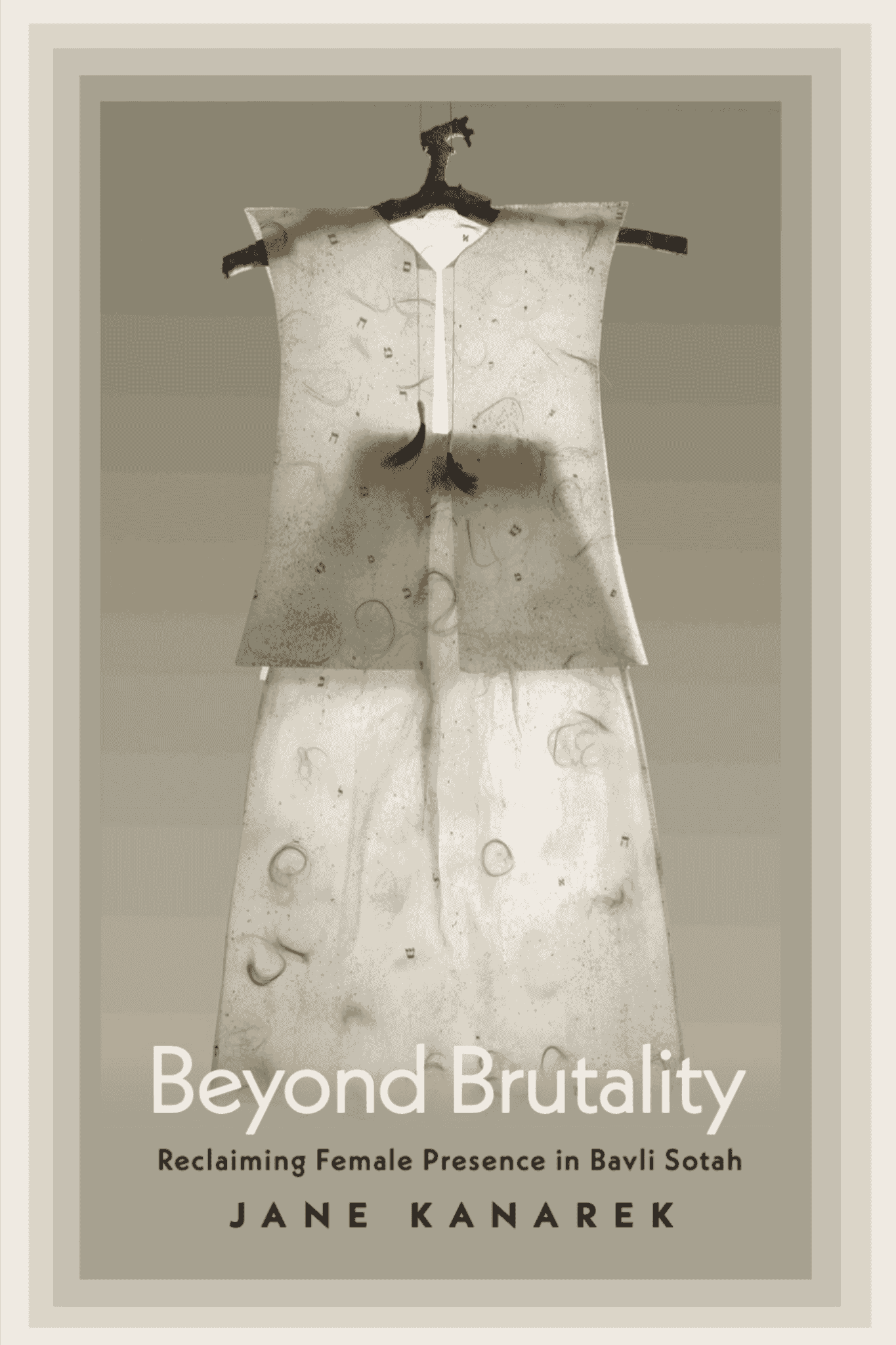
Cover image: Andi Arnovitz, “The Dress of the Unfaithful Wife” (2009), Japanese paper, hair, dirt, film and threads, 110 x 46 x 13 cm.
Jane Kanarek (December 2025)
Beyond Brutality draws on feminist analysis and gender studies to examine tractate Sotah of the Babylonian Talmud as a literary unit. By interrogating how, why, and where women are invisible within Bavli Sotah, Jane Kanarek brings to light a ubiquitous female presence throughout the text. Despite the brutality of the sotah ritual—in which the woman accused of adultery is put through a divine ordeal intended to reveal her innocence or her guilt—this book demonstrates that Bavli Sotah is not primarily concerned with describing the sotah ritual or establishing male control over women. Instead, Bavli Sotah becomes a pedagogical text in which the sotah is secondary to moral and sinning men. As the sotah herself fades into the background, the sotah ritual nevertheless overflows its boundaries and weaves its way through a range of other topics within the tractate. In the process, Bavli Sotah teaches its audience who transmits and how one transmits rabbinic culture.
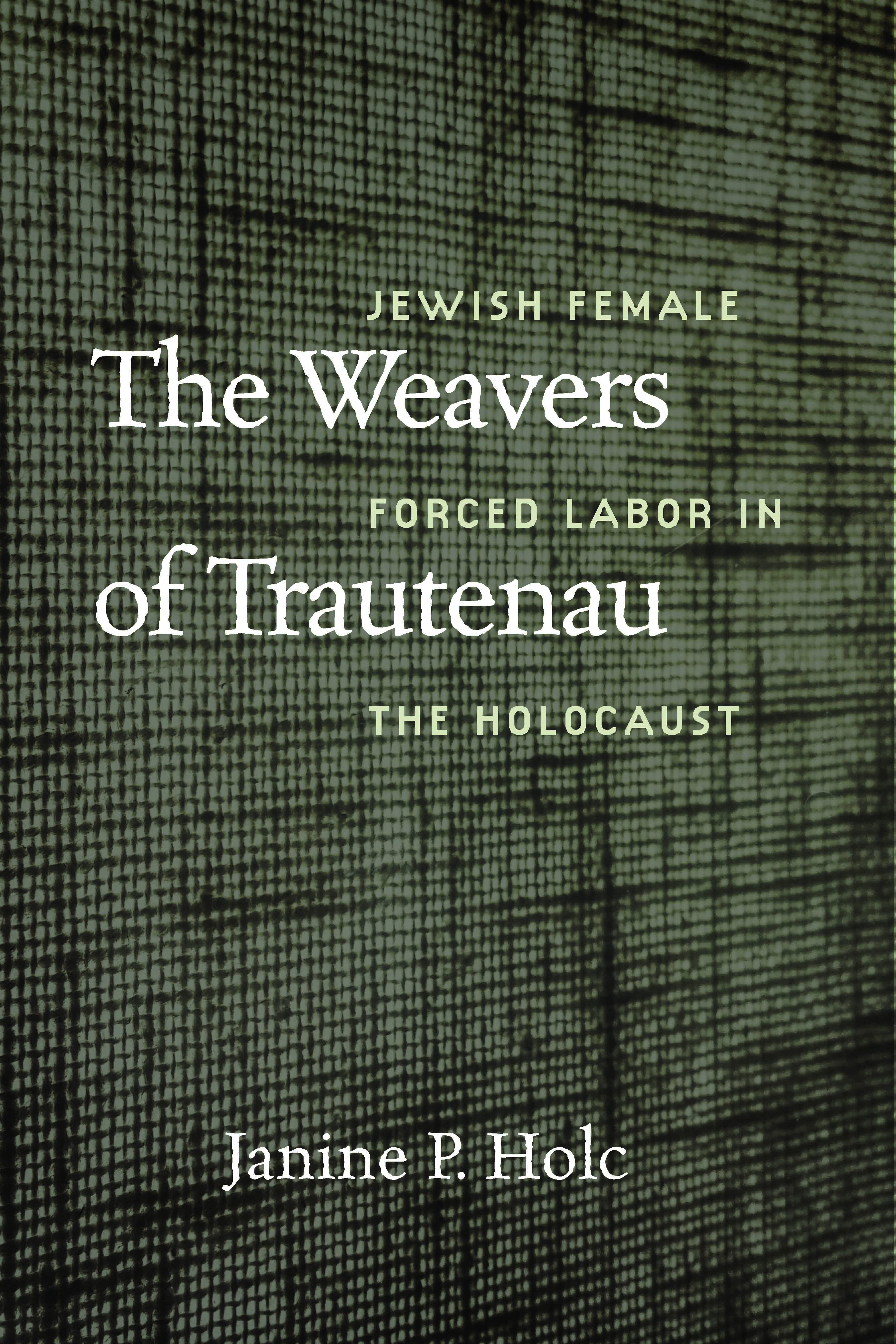
Janine P. Holc (2023)
Beginning in late 1940, over three thousand Jewish girls and young women were forced from their family homes in Sosnowiec, Poland, and its surrounding towns to worksites in Germany. Believing that they were helping their families to survive, these young people were thrust into a world where they labored at textile work for twelve hours a day, lived in barracks with little food, and received only periodic news of events back home. By late 1943, their barracks had been transformed into concentration camps, where they were held until liberation in 1945.
Using a fresh approach to testimony collections, Janine P. Holc reconstructs the forced labor experiences of young Jewish females, as told by the women who survived and shared their testimony. Incorporating new source material, the book carefully constructs survivors’ stories while also taking a theoretical approach, one alert to socially constructed, intersectional systems of exploitation and harm. The Weavers of Trautenau elucidates the limits and possibilities of social relations inside camps and the challenges of moral and emotional repair in the face of indescribable loss during the Holocaust.
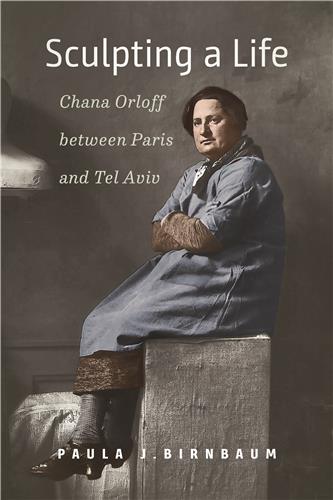
Paula Birnbaum (2023)
In Sculpting a Life, the first book-length biography of sculptor Chana Orloff (1888-1968), author Paula Birnbaum tells the story of a fiercely determined and ambitious woman who fled antisemitism in Ukraine, emigrated to Palestine with her family, then travelled to Paris to work in haute couture before becoming an internationally recognized artist. Against the backdrop of revolution, world wars, a global pandemic and forced migrations, her sculptures embody themes of gender, displacement, exile, and belonging. A major figure in the School of Paris, Orloff contributed to the canon of modern art alongside Picasso, Modigliani and Chagall.
Stories from her unpublished memoir enrich this life story of courage, perseverance, and extraordinary artistic accomplishments that take us through the aftermath of the Holocaust when Orloff lived between Paris and Tel Aviv. This biography brings new perspectives and understandings to Orloff’s multiple identities as a cosmopolitan émigré, woman, and Jew, and is a much-needed intervention into the narrative of modern art.
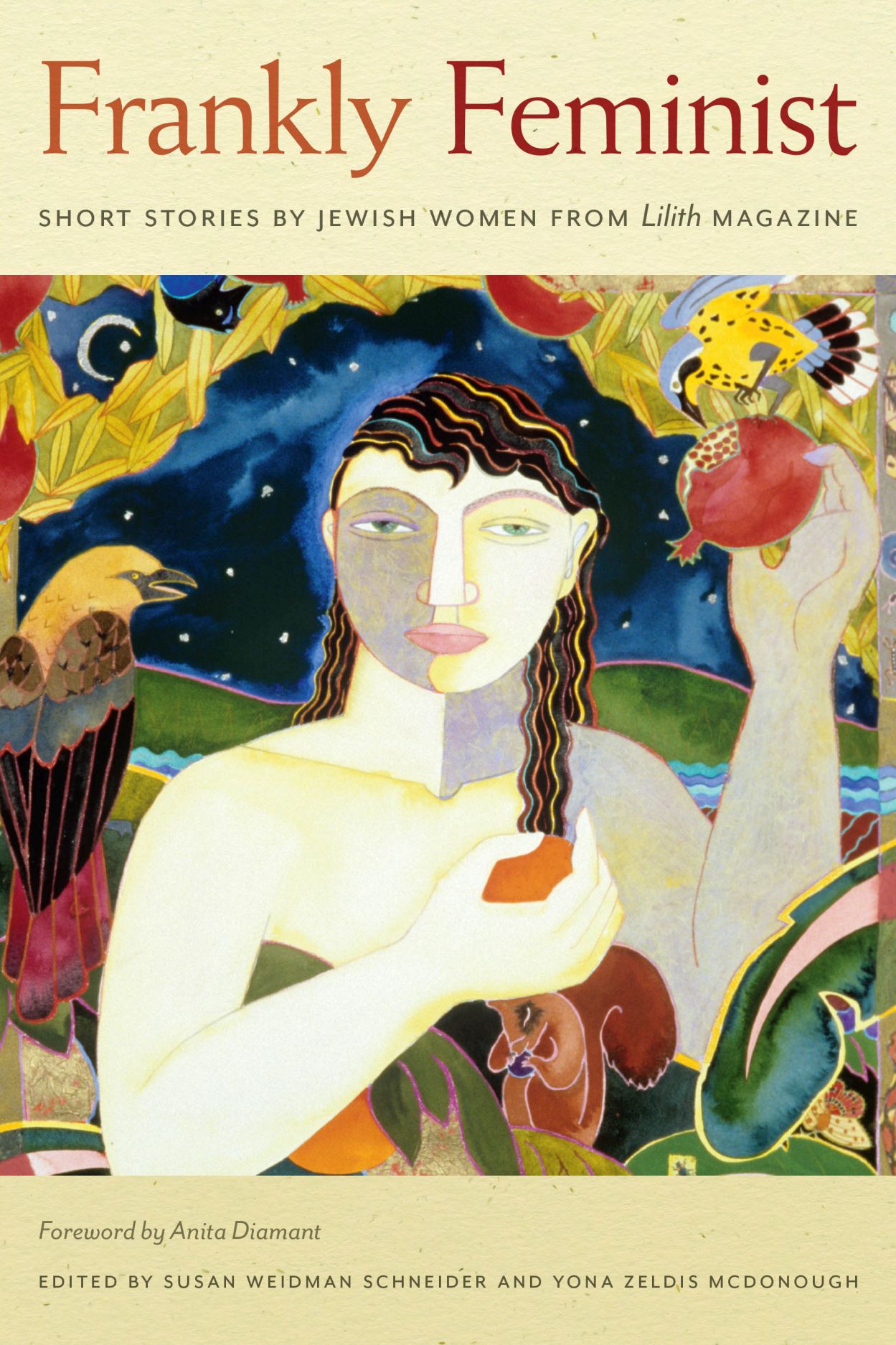
Edited by Susan Weidman Schneider and Yona Zeldis McDonough (2022)
Short story collections focusing on Jewish writers have—no surprise—typically given women authors short shrift. This new volume represents the best Jewish feminist fiction published in Lilith magazine, and does what no other collection has done before in its geographic scope, its inclusion of 21st-century stories, and its Jewish feminist focus.
This collection showcases a wide range of stories offering variegated cultures and contexts and points of view: Persian Jews; a Biblical matriarch; an Ethiopian mother in modern Israel; suburban American teens; Eastern European academics; a sexual questioner; a Jew by choice; a new immigrant escaping her Lower East Side sweatshop; a Black Jewish marcher for justice; in Vichy France, a toddler’s mother hiding out; and more.
Organized by theme, the stories in this book emphasize a breadth of content, and our hope is that in reading you’ll appreciate the liveliness of the burgeoning self-awareness brought to life in each tale, and the occasional funny, call-your-friend-and-tell-her-about-it moment. Skip around, encounter an author whose other work you may know, be enticed by a title, or an opening line. We hope you’ll find both pleasure and enlightenment—and sometimes revelation—within these pages.
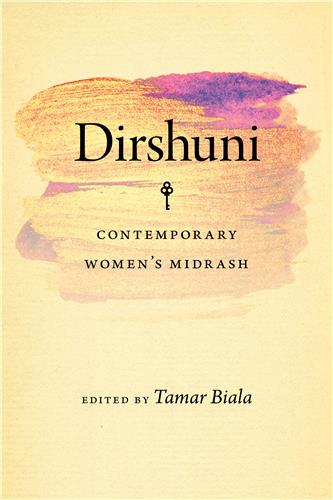
Edited by Tamar Biala (2022)
Dirshuni: Contemporary Women’s Midrash, is the first ever English edition of an historic collection of midrashim composed by Israeli women, long anticipated by multiple American audiences – of synagogues, Rabbinical seminaries, adult learning programs, Jewish educators and scholars of gender and religion. Using the classical forms developed by the ancient rabbis, they express their religious and moral thought and experience through innovative interpretations of Scripture. The women writers, from all denominations and beyond, of all political stripes and ethnic backgrounds, contribute their Torah to fill the missing half of the sacred Jewish bookshelf.
The volume features a comprehensive introduction to Midrash for the uninitiated reader by the distinguished scholar Tamar Kadari and extensive annotation and commentary by Tamar Biala.
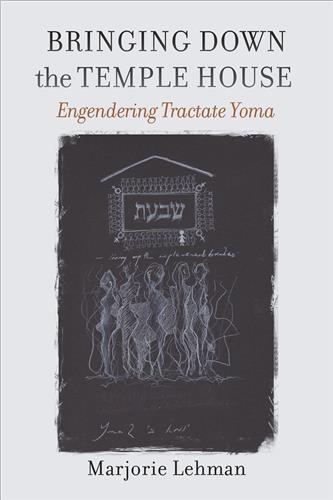
Marjorie Lehman (2022)
A feminist project that privileges the Babylonian Talmudic tractate as culturally significant. While the use of feminist analysis as a methodological lens is not new to the study of Talmudic literature or to the study of individual tractates, this book demonstrates that such an intervention reveals new perspectives on the rabbis’ relationship with the temple and its priesthood. More specifically, through the relationships most commonly associated with home, such as those of husband-wife, father-son, mother-son and brother-brother, the rabbis destabilize the temple bayit (or temple house). Moving beyond the view that the temple was replaced by the rabbinic home, and that rabbinic rites reappropriate temple practices, a feminist approach highlights the inextricable link between kinship, gender and the body, calling attention to the ways the rabbis deconstruct the priesthood so as to reconstruct themselves.
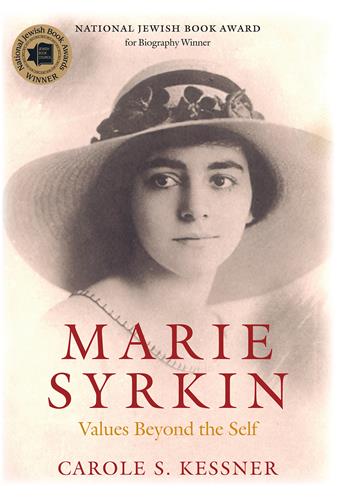
Carole S. Kessner (Second Edition, 2021)
Marie Syrkin’s life spanned ninety years of the twentieth century, 1899–1989. As a polemical journalist, socialist Zionist, poet, educator, literary critic, translator, and idiosyncratic feminist, she was eyewitness to and reporter on most of the major events in America, Israel, and Europe. Beautiful as well as brilliant, she had a rich personal life as lover, wife, mother, and friend. During her lifetime Syrkin’s name was widely recognized in the world of Jewish life and letters. Yet, inevitably, since her death, recognition of her name is no longer quite so immediate. Carole S. Kessner’s intention is to restore for a new generation the singular legacy of Syrkin’s life.
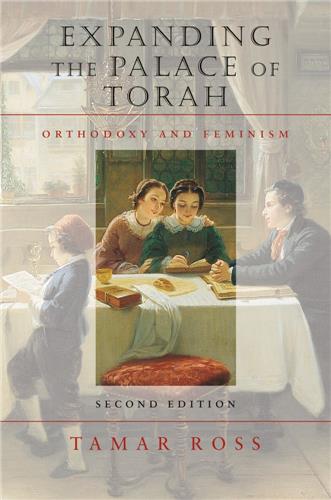
Tamar Ross (Second Edition, 2021)
Expanding the Palace of Torah offers a broad philosophical overview of the challenges the women’s revolution poses to Orthodox Judaism, as well as Orthodox Judaism’s response to those challenges. Writing as an insider—herself an Orthodox Jew—Tamar Ross confronts the radical feminist critique of Judaism as a religion deeply entrenched in patriarchy. Surprisingly, very little work has been done in this area, beyond exploring the leeway for ad hoc solutions to practical problems as they arise on the halakhic plane. In exposing the largely male-focused thrust of the rabbinic tradition and its biblical grounding, she sees this critique as posing a potential threat to the theological heart of traditional Judaism—the belief in divine revelation. This new edition brings this acclaimed and classic text back into print with a new essay by Tamar Ross which examines new developments in feminist thought since the book was first published in 2004.
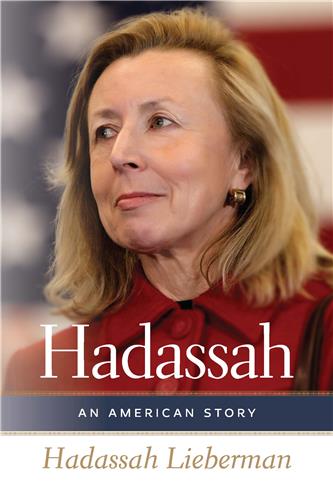
Hadassah Lieberman (2021)
Born in Prague to Holocaust survivors, Hadassah Lieberman and her family immigrated in 1949 to the United States. She went on to earn a BA from Boston University in government and dramatics and an MA in international relations and American government from Northeastern University. She built a career devoted largely to public health that has included positions at Lehman Brothers, Pfizer, and the National Research Council. After her first marriage ended in divorce, she married Joe Lieberman, a US senator from Connecticut who was the Democratic nominee for vice president with Al Gore and would go on to run for president. In Hadassah, Lieberman pens the compelling story of her extraordinary life: from her family’s experience in Eastern Europe to their move to Gardner, Massachusetts; forging her career; experiencing divorce; and, following her remarriage, her life on the national political stage. By offering insight into her identity as an immigrant, an American Jew, a working woman, and a wife, mother, and grandmother, Lieberman’s moving memoir speaks to many of the major issues of our time, from immigration to gender politics. Featuring an introduction by Joe Lieberman and an afterword by Megan McCain, it is a true American story.
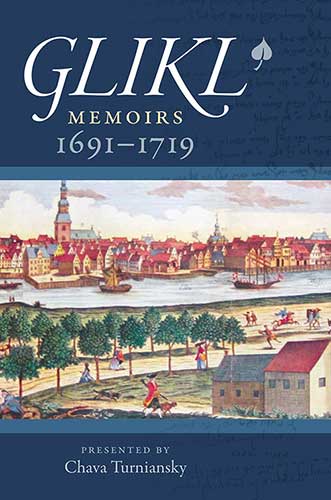
Annotated by and with an Introduction by Chava Turniansky (translated by Sara Friedman) (2019)
“My dear children, I write this for you in case your dear children or grandchildren come to you one of these days, knowing nothing of their family. For this reason I have set this down for you here in brief, so that you might know what kind of people you come from.” These words from the memoirs Glikl bas Leyb wrote in Yiddish between 1691 and 1719 shed light on the life of a devout and worldly woman. Writing initially to seek solace in the long nights of her widowhood, Glikl continued to record the joys and tribulations of her family and community in an account unique for its impressive literary talents and strong invocation of self. Through intensely personal recollections, Glikl weaves stories and traditional tales that express her thoughts and beliefs. While influenced by popular Yiddish moral literature, Glikl’s frequent use of first person and the significance she assigns her own life experience set the work apart. Informed by fidelity to the original Yiddish text, this authoritative new translation is fully annotated to explicate Glikl’s life and times, offering readers a rich context for appreciating this classic work.
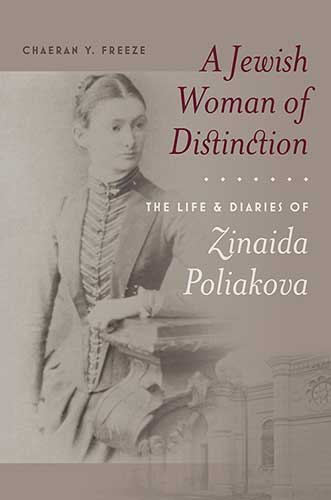
ChaeRan Y. Freeze (translated by Gregory L. Freeze) (2019)
Zinaida Poliakova (1863–1953) was the eldest daughter of Lazar Solomonovich Poliakov, one of the three brothers known as the Russian Rothschilds. They were moguls who dominated Russian finance and business and built almost a quarter of the railroad lines in Imperial Russia. For more than seventy-five years, Poliakova kept detailed diaries of her world, giving us a rare look into the exclusive world of Jewish elites in Moscow and St. Petersburg. These rare documents reveal how Jews successfully integrated into Russian aristocratic society through their intimate friendships and patronage of the arts and philanthropy. And they did it all without converting—in fact, while staunchly demonstrating their Jewishness. Poliakova’s life was marked by her dual identity as a Russian and a Jew. She cultivated aristocratic sensibilities and lived an extraordinarily lifestyle, and yet she was limited by the confessional laws of the empire and religious laws that governed her household. She brought her Russian tastes, habits, and sociability to France following her marriage to Reuben Gubbay (the grandson of Sir Albert Abdullah Sassoon). And she had to face the loss of almost all her family members and friends during the Holocaust. Women’s voices are often lost in the sweep of history, and so A Jewish Women of Distinction is an exceptional, much-needed collection. These newly discovered primary sources will change the way we understand the full breadth of the Russian Jewish experience.
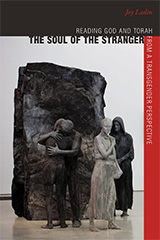
Joy Ladin (2018)
Reading some of the best-known Torah stories through the lens of transgender experience, Joy Ladin explores fundamental questions about how religious texts, traditions, and the understanding of God can be enriched by transgender perspectives, and how the Torah and trans lives can illuminate one another. Drawing on her own experience and lifelong reading practice, Ladin shows how the Torah, a collection of ancient texts that assume human beings are either male or female, speaks both to practical transgender concerns, such as marginalization, and to the challenges of living without a body or social role that renders one intelligible to others—challenges that can help us understand a God who defies all human categories. These creative, evocative readings transform our understanding of the Torah’s portrayals of God, humanity, and relationships between them.
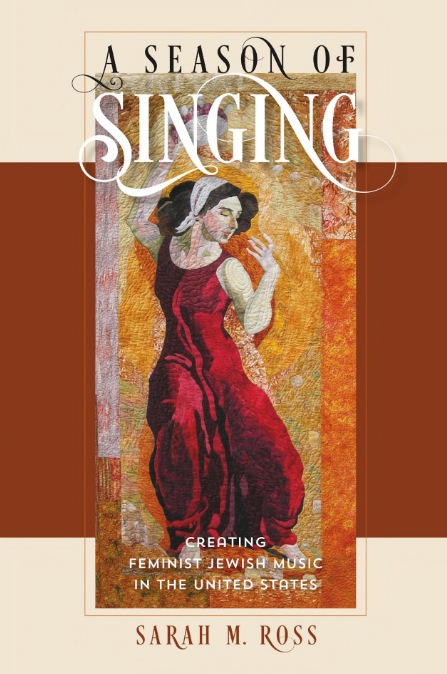
Sarah M. Ross (2016)
In the 1960s, Jewish music in America began to evolve. Traditional liturgical tunes developed into a blend of secular and sacred sound that became known in the 1980s as “American Nusach.” Chief among these developments was the growth of feminist Jewish songwriting. In this lively study, Sarah M. Ross brings together scholarship on Jewish liturgy, U.S. history, and musical ethnology to describe the multiple roots and development of feminist Jewish music in the last quarter of the twentieth century. Focusing on the work of prolific songwriters such as Debbie Friedman, Rabbi Geela Rayzel Raphael, Rabbi Hanna Tiferet Siegel, and Linda Hirschhorn, this volume illuminates the biographies and oeuvres of innovators in the field, and shows how this new musical form arose from the rich contexts of feminism, identity politics, folk music, and Judaism. In addition to providing deep content analysis of individual songs, Ross examines the feminist Jewish music scene across the United States, the reception of this music, challenges to disseminating the music beyond informal settings, and the state of Jewish music publishing. Rounding out the picture of the transformation of Jewish music, the volume contains appendixes of songs and songwriters a selection of musical transcriptions of feminist Jewish songs, and a comprehensive discography. This book will interest scholars and students in the fields of American Jewish history, women’s studies, feminism, ethnomusicology, and contemporary popular and folk music.
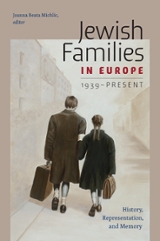
Edited by Joanna Beata Michlic (2017)
This book offers an extensive introduction and 13 diverse essays on how World War II, the Holocaust, and their aftermath affected Jewish families and Jewish communities, with an especially close look at the roles played by women, youth, and children. Focusing on Eastern and Central Europe, themes explored include: how Jewish parents handled the Nazi threat; rescue and resistance within the Jewish family unit; the transformation of gender roles under duress; youth’s wartime and early postwar experiences; postwar reconstruction of the Jewish family; rehabilitation of Jewish children and youth; and the role of Zionism in shaping the present and future of young survivors. Relying on newly available archival material and novel research in the areas of families, youth, rescue, resistance, gender, and memory, this volume will be an indispensable guide to current work on the familial and social history of the Holocaust.
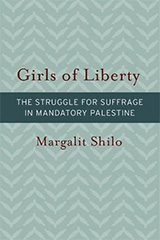
Margalit Shilo (2016)
Following the Balfour Declaration and the British conquest of Palestine (1917–1918), the small Jewish community that lived there wanted to establish an elected assembly as its representative body. The issue that hindered this aim was whether women would be part of it. A group of feminist Zionist women from all over the country created a political party that participated in the elections, even before women’s suffrage was enacted. This unique phenomenon in Mandatory Palestine resulted in the declaration of women’s equal rights in all aspects of life by the newly founded Assembly of Representatives. Margalit Shilo examines the story of these activists to elaborate on a wide range of issues, including the Zionist roots of feminism and nationalism; the ultra-Orthodox Jewish sector’s negation of women’s equality; how traditional Jewish concepts of women fashioned rabbinical attitudes on the question of women’s suffrage; and how the fight for women’s suffrage spread throughout the country. Using current gender theories, Shilo compares the Zionist suffrage struggle to contemporaneous struggles across the globe, and connects this nearly forgotten episode, absent from Israeli historiography, with the present situation of Israeli women. This rich analysis of women’s right to vote within this specific setting will appeal to scholars and students of Israel studies, and to feminist and social historians interested in how contexts change the ways in which activism is perceived and occurs.

Edited by Sylvia Barack Fishman (2015)
The concepts of gender, love, and family—as well as the personal choices regarding gender-role construction, sexual and romantic liaisons, and family formation—have become more fluid under a society-wide softening of boundaries, hierarchies, and protocols. Sylvia Barack Fishman gathers the work of social historians and legal scholars who study transformations in the intimate realms of partnering and family construction among Jews. Following a substantive introduction, the volume casts a broad net. Chapters explore the current situation in both the United States and Israel, attending to what once were considered unconventional household arrangements—including extended singlehood, cohabitating couples, single Jewish mothers, and GLBTQ families—along with the legal ramifications and religious backlash. Together, these essays demonstrate how changes in the understanding of male and female roles and expectations over the past few decades have contributed to a social revolution with profound—and paradoxical—effects on partnering, marriage, and family formation. This diverse anthology—with chapters focusing on demography, ethnography, and legal texts—will interest scholars and students in Jewish studies, women’s and gender studies, Israel studies, and American Jewish history, sociology, and culture.
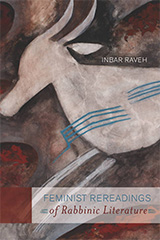
Inbar Raveh (2014)
This book offers a fresh perspective on classical Jewish literature by providing a gender-based, feminist reading of rabbinical anecdotes and legends. Viewing rabbinical legends as sources that generate perceptions about women and gender, Inbar Raveh provides answers to questions such as how the Sages viewed women; how they formed and molded their characterization of them; how they constructed the ancient discourse on femininity; and what the status of women was in their society. Raveh also re-creates the voices and stories of the women themselves within their sociohistorical context, moving them from the periphery to the center and exposing how men maintain power. Chapter topics include desire and control, pain, midwives, prostitutes, and myth. A major contribution to the fields of literary criticism and Jewish studies, Raveh’s book demonstrates the possibility of appreciating the aesthetic beauty and complexity of patriarchal texts, while at the same time recognizing their limitations.

Marcia Falk (2014)
The Jewish High Holidays—the ten days beginning with the New Year Festival of Rosh Hashanah and culminating with Yom Kippur, the Day of Atonement—constitute the most sacred period of the Jewish year. During this season, religious as well as nonaffiliated Jews attend synagogue services in unparalleled numbers. Yet much of what they find there can be unwelcoming in its patriarchal imagery, leaving many worshipers unsatisfied. For those seeking to connect more deeply with their Judaism, and for all readers in search of a contemplative approach to the themes of the fall season, poet and scholar Marcia Falk re-creates the holidays’ key prayers and rituals from an inclusive perspective. Among the offerings in The Days Between are Hebrew and English blessings for festive meals, prayers for synagogue services, and poems and meditations for quiet reflection. Emphasizing introspection as well as relationship to others, Falk evokes her vision of the High Holidays as “ten days of striving to keep the heart open to change.” Accessible and welcoming to modern readers, The Days Between is steeped in traditional sources and grounded in liturgical and biblical scholarship. It will serve as a meaningful alternative or supplement to the traditional liturgy for individuals, families, synagogues, and communities small and large—that is, for all who seek fresh meaning in the High Holidays.
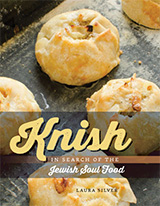
Laura Silver (2014)
When Laura Silver’s favorite knish shop went out of business, the native New Yorker sank into mourning, but then she sprang into action. She embarked on a round-the-world quest for the origins and modern-day manifestations of the knish. The iconic potato pie leads the author from Mrs. Stahl’s bakery in Brighton Beach, Brooklyn, to an Italian pasta maker in New Jersey—and on to a hunt across three continents for the pastry that shaped her identity. Starting in New York, she tracks down heirs to several knish dynasties and discovers that her own family has roots in a Polish town named Knyszyn. With good humor and a hunger for history, Silver mines knish lore for stories of entrepreneurship, survival, and major deliciousness. Along the way, she meets Minnesota seniors who make knishes for weekly fundraisers, foodies determined to revive the legacy of Mrs. Stahl, and even the legendary knish maker’s granddaughters, who share their joie de vivre—and their family recipe. Knish connections to Eleanor Roosevelt and rap music? Die-hard investigator Silver unearths those and other intriguing anecdotes involving the starchy snack once so common along Manhattan’s long-lost Knish Alley. In a series of funny, moving, and touching episodes, Silver takes us on a knish-eye tour of worlds past and present, thus laying the foundation for a global knish renaissance.
View all of the publications in the HBI Series on Jewish Women on the Brandeis University Press website.